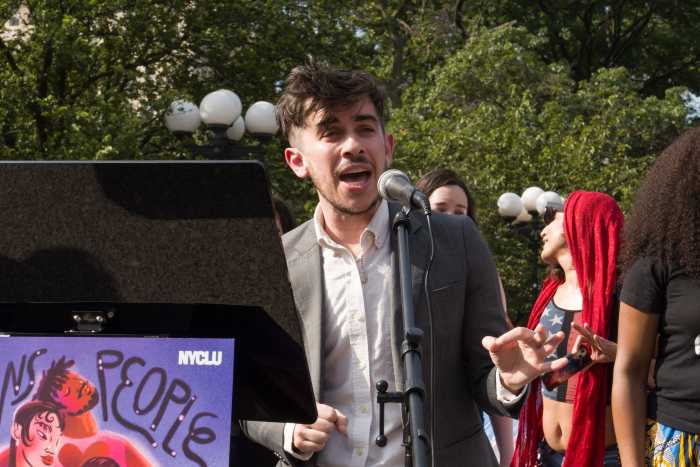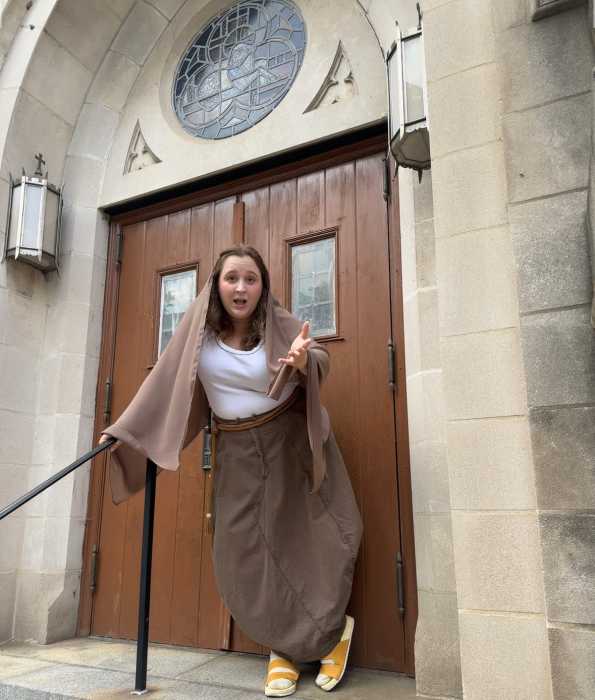When Evan Wolfson founded Freedom to Marry in 2003, the pro-gay marriage group was a part of the Astraea Lesbian Foundation for Justice, and it had an budget that ranged from $1.2 million to $1.4 million annually for roughly the next seven years. The organization was an “internal movement strategy center” and a cheerleader for the marriage drive.
“I spent much more of my time raising money for other organizations than I did for Freedom to Marry,” said Wolfson, the group’s president, during a September 23 interview at the organization’s Flatiron District offices, offices that are too small for its staff of 15.
Freedom to Marry, once a strategy shop, hits the ground in state battles
“It represents about a quadrupling of the staff from its lowest point,” Wolfson said, noting that Freedom to Marry, which has a $5 million budget this year, is looking for new office space.
The group’s new status is best illustrated by the major role it played in enacting same-sex marriage in New York this year. As one of five member organizations in New Yorkers United for Marriage (NYUM), Freedom to Marry spent over $1 million, with half of that cash going to NYUM. The remainder was spent independently.
The organization has two components — the 501(c)(3) Freedom to Marry and the 501(c)(4) Freedom to Marry Action. While both are non-profit, donations to (c)(3)s, which are allowed to do very limited lobbying, are tax-deductible while donations to (c)(4)s are not. A (c)(4) can lobby and campaign for or against a ballot initiative. A (c)(4) can support candidates, though how much is a subject of debate.
“I think it’s impossible to answer,” said Tracey Bolotnick, an attorney Hurwit & Associates, a Boston-based law firm, who specializes in non-profit law. “The ballot stuff is 100 percent fine for (c)(4)s; candidate stuff is somewhat limited.”
Wolfson said Freedom to Marry has a three-part mission –– “to win more states, to grow the majority for marriage creating the public opinion climate that inspires elected officials and courts to do the right thing,” and to “tackle and end federal marriage discrimination.”
Among the awards and photos that decorate his office walls are pictures of the slain civil rights leader Martin Luther King and Abraham Lincoln. It is their leadership, in part, that informs his strategy for winning marriage.
“You need to have a critical mass of states and a critical mass of public opinion, and in some combination those two critical masses of progress are what encourage, push, inspire, enable Congress or the Supreme Court to finish the job,” Wolfson said.
Like most LGBT groups, Freedom to Marry is very concerned with messaging –– how the community presents itself, its stories, its reasons for wanting to marry to those Americans who can be convinced to vote with us. “This is not just a question of advertising, it’s not just a question of words,” Wolfson said. “It’s all the ways that people gain information and have their hearts touched.”
While gay groups say polls show majority support for same-sex marriage in the US, the community has lost every marriage ballot initiative. Dating back to 1978, the community has lost more than eight out of ten ballot initiatives. The community has only recently developed effective messages, but it has not communicated those messages well. “We know the message,” Wolfson said. “Our weakness has not been message, our weakness has been message delivery.”
He points to a test Freedom to Marry carried out in 2007 in California’s Santa Barbara County where voters saw repeated ads about loving and committed gay and lesbian couples. “The one county we won in southern California was Santa Barbara,” Wolfson noted, saying they had found a way to effectively deliver their message. That county is represented by Democrats and Republicans in Congress and the State Legislature. A Republican presidential candidate has not won that county since 1988.
The real test of the community’s message delivery will come in 2012. A ban on gay marriage will be on the ballot in Minnesota, and Maine may see an effort to enact gay marriage by ballot initiative next year, as well.
“There is no choice but to step up and do your best to defeat this kind of cruel attack on families,” Wolfson said of the Minnesota campaign.
Freedom to Marry has established a political action committee in Minnesota and is part of Minnesotans United for All Families, the coalition that will oppose the ban.
That coalition recently hired Richard Carlbom as its campaign manager. Carlbom was the spokesman for St. Paul’s mayor, the campaign manager for a Congressman Tim Walz, a Democrat, and the mayor of a small town in Minnesota. Carlbom has never run a statewide campaign.
While groups in Maine have begun circulating petitions to put a same-sex marriage initiative on the ballot next year, they may yet decide against a 2012 campaign. “Have we moved enough people, have we engaged enough new voters, have we laid the public education climate, have we built the right campaign team, and have we raised enough money?” Wolfson said, referring to criteria that will influence a decision about moving forward. “Our colleagues in Maine are looking very carefully at that.”
The marriage ballot initiative that the community will likely lose next year will come during the Republican primary in North Carolina. “North Carolina is coming under attack now, but if that were not appalling enough, the anti-gay forces have stacked the deck by putting it on the Republican primary,” Wolfson said. “Looking at the odds of prevailing in this vote in this snapshot moment, obviously it’s a very uphill fight.”
Perhaps more than any other goal, Freedom to Marry wants the community to stop lurching from battle to battle. Wolfson said other gay and lesbian groups were “100 percent signed on to the strategy” of doing early and sustained work to win hearts and minds.
“There is a strategy that is affirmative, not reactive,” he said. “Much of the movement’s work historically has been reactive and even opportunistic. People go where they see the options, the opportunities, but aren’t necessarily laying the foundation for the win they want.”


































